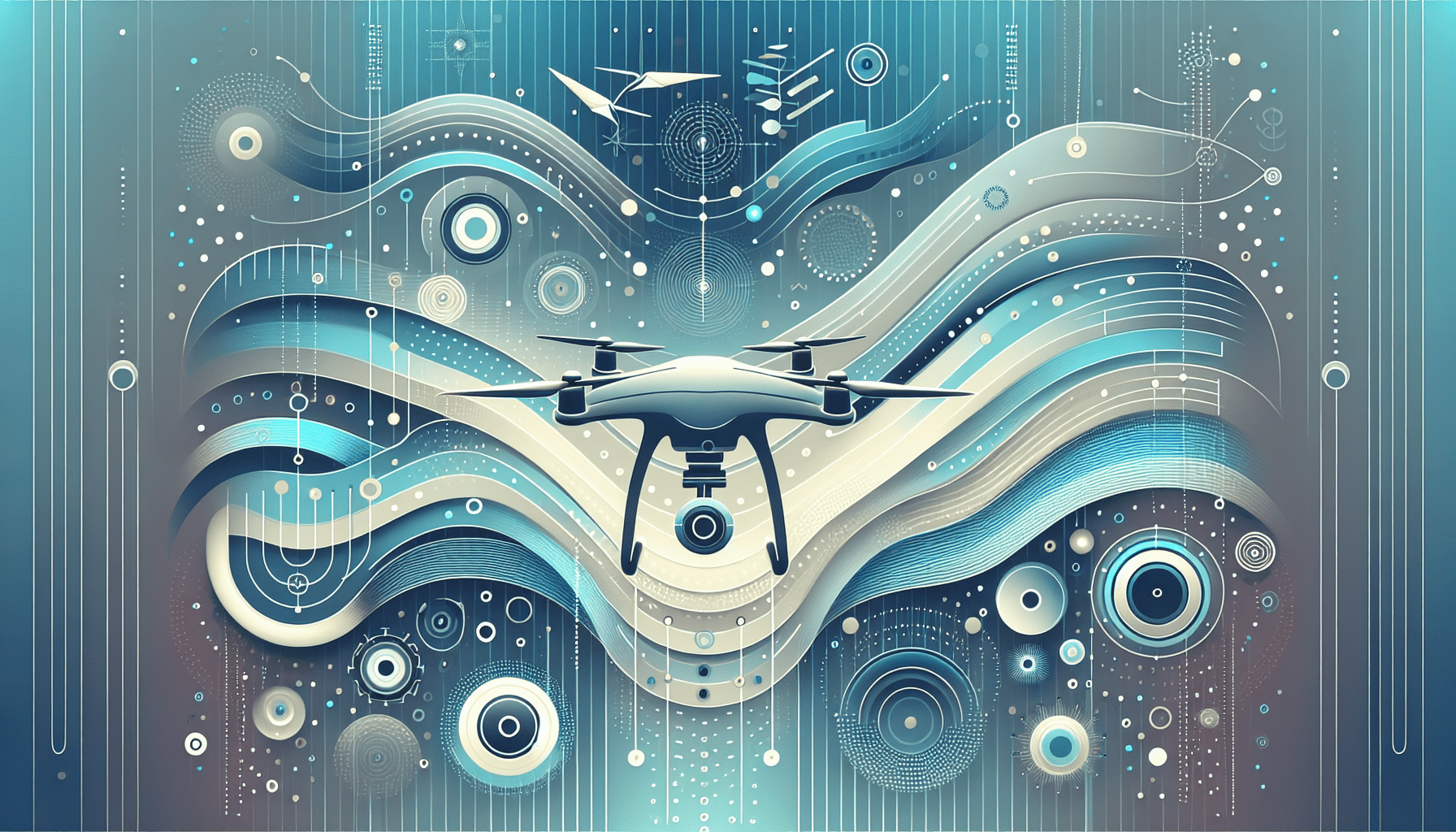ROI Strategies to Maximise Drone Investment ROI
In This Article
- Plan drone investments using specific ROI-focused financial models.
- Budget for both initial and ongoing operational costs to maintain accuracy.
- Select drones based on true ROI potential, not just specs or brand prestige.
- Invest in staff training to unlock operational and data-driven efficiencies.
- Implement KPIs to continually measure performance and justify future scaling.
- Use drones across departments to maximise asset utilisation rates.
Understanding Drone ROI in Modern Business
Why Drone Adoption Impacts Profits
ROI Strategies are central to the decision-making process when incorporating drone technology into business operations. Drones offer a transformative advantage across industries—enhancing data collection, improving safety, and streamlining workflows. With proper strategic execution, they represent more than a technological upgrade—they become assets that significantly impact profitability. Companies leveraging drone capabilities for surveying, agriculture, construction, media, and logistics are seeing improved efficiency and faster project completion times. Reduced reliance on manual labour and more accurate resource allocation also lead to lower operational costs, directly contributing to increased return on investment (ROI). However, to benefit financially, businesses must identify clear objectives and establish measurable outcomes for deployments. Without structured ROI Strategies in place, businesses run the risk of underutilisation and inefficient capital expenditure. Clarity in metrics and goal-driven usage are integral to unlocking drones’ true value.

Cost Breakdown: Initial vs Recurring Expenses
How to Track Drone Investment Payback
Understanding the full cost structure is essential to developing effective ROI Strategies. Businesses typically face two major drone-related expense categories: initial capital expenditure and ongoing operational costs. Initial costs include equipment purchases, licensing fees, hardware accessories, and compatible data processing software. In contrast, recurring expenses include maintenance, battery replacements, insurance premiums, training, and regulatory compliance.
To calculate true ROI, businesses must adopt expense-tracking models that distinguish between capital expenditures and operational expenses. For instance, implementing detailed cost allocation templates enables CFOs and financial analysts to determine the payback period accurately. Many SMEs find success applying a 12–18-month model for breakeven analysis. It’s critical to monitor resource consumption per flight hour, employee hours saved, and project acceleration metrics. These indicators allow finance departments to anticipate budgeting cycles better and align operational outcomes with underlying financial goals. Learn more about Drone ROI and Business Investment Strategies
Selecting the Right Drone for ROI
Budget-Conscious Drone Options That Deliver
When evaluating drones from an ROI perspective, the market offers a wide selection tailored to various commercial needs. Budget-friendly drones, such as those from DJI’s Enterprise series or Parrot’s business range, provide a great starting point with robust capabilities. Choosing the right drone depends on intended industry application, required image resolution, flight duration, weather resistance, and sensor features.
For agricultural firms focusing on crop surveillance, models with thermal imaging and NDVI sensors are essential. In the construction sector, accuracy and stability are paramount—demanding high-spec GPS and LiDAR integration. Despite upfront costs varying significantly, the ideal model doesn’t always equate to the most expensive one. With thoughtful ROI Strategies, value can be extracted from mid-tier UAVs. Businesses must assess lifecycle value, mission compatibility, and depreciation rate to determine where their investment achieves peak returns. Comparing vendor guarantees, support services, and upgrade pathways further enhances ROI predictability. Read a financial breakdown of drone ROI integration
Staff Training and Workflow Optimization
Maximising Human Capital via Drone Integration
Drone adoption goes beyond hardware—skill development is equally crucial. Effective ROI Strategies hinge on fully integrated workflows, and that necessitates a trained, competent workforce. Organisations that invest in comprehensive training programmes see marked improvements in data quality, flight safety, and regulatory compliance.
Upskilling existing staff for drone operations eliminates the need for costly third-party pilots. Cross-functional training—where project managers, field technicians, and analysts understand the drone workflow—greatly reduces downtime and resource overlap. Implementing standardised protocols for pre-flight planning, data processing, and reporting ensures cost-efficiency and accountability.
Moreover, automating repetitive tasks like inspections or structure modelling frees up personnel time, allowing departments to focus on higher-value objectives. Workflow optimisation also improves scheduling and turnaround time, which translates to faster deliverables, reduced client churn, and improved margin—all essential elements of a sound ROI Strategy.
Proven Financial Models for Drone Success
Frameworks You Can Follow
To maximise the financial return on drone investments, businesses must align with established ROI models such as Net Present Value (NPV), Internal Rate of Return (IRR), and the Payback Period method. Each framework offers a unique lens through which stakeholders can evaluate and forecast returns.
The Payback Period model is particularly useful for short-term projects and provides an understandable measure of how quickly an investment pays for itself. For long-term gains, NPV accounts for the time value of money, helping firms quantify returns across a multi-year horizon. Additionally, IRR can benchmark whether drone investment yields exceed alternative uses of capital.
More advanced models integrate drone productivity metrics—such as hectares mapped per hour or reduction in labour hours—to calculate financial yield more precisely. Embedding ROI Strategies within budgeting software or financial dashboards ensures continuous oversight. Proper modelling also facilitates investment pitch decks, permitting executives to justify further funding based on empirical evidence. Read a related article
Asset Utilisation and Maintenance ROI
Optimising Drone Lifespan and Value
Longevity and optimal usage of drones are crucial ROI determinants. Idle drones represent sunk costs; therefore, maximising utilisation should be a core strategic objective. Businesses must create deployment schedules where drones are used across multiple departments or projects to ensure continuous operational benefit.
Preventative maintenance, real-time diagnostics, and software updates are inexpensive ways to drastically increase drone resilience. Regular calibration and battery management improve in-flight performance while reducing the risk of expensive hardware failure. It’s also vital to maintain comprehensive flight logs and inspection checklists to track wear and forecast replacement timelines.
Moreover, asset utilisation metrics should be central to quarterly performance reviews. When drone systems are treated as dynamic business tools with measurable ROI yield, executives achieve stronger capital distribution across departments and projects. Efficient fleet rotation extends each drone’s productive life, further adding value.
Measuring Business Performance Improvements
KPIs That Matter for Drone Deployments
Effective ROI Strategies depend on reliable performance indicators. To move beyond anecdotal success, businesses must analyse both quantitative and qualitative metrics. Key Performance Indicators (KPIs) should include data processing accuracy, flight time economy, survey completion speed, and operational cost reductions.
Performance dashboards can track aggregated savings generated per campaign, while integration with CRM systems provides visibility on customer satisfaction and retention rate improvements. In logistics, delivery time per parcel post-drone-adoption is an essential metric. In marketing or creative firms, the value can be measured through faster go-to-market timelines or increased client acquisition based on high-quality drone footage outputs.
These indicators help companies pivot when strategic misalignments occur. Regular KPI reviews also ensure management remains adaptive to technological upgrades and market demand changes—critical for safeguarding long-term ROI.
Drone Use Cases with Quick Turnaround ROI
Industries Seeing Results in Months
Certain sectors achieve ROI from drone integration faster than others. For example, in real estate and property management, using drones for aerial mapping and marketing videos yields immediate benefits—properties showcase better and close faster. Likewise, agricultural applications involving crop health analytics can lead to yield improvements within a single season.
Construction firms deploying UAVs for site inspections or photogrammetry surveys often realise project savings within six months by reducing surveying costs and improving accuracy. Energy companies utilising drones for powerline or pipeline inspections cut auditing times by half, drastically reducing labour costs and risk exposure.
In film production and events, drones eliminate the need for cranes or helicopters, offering quick ROI through cost-effective footage acquisition. This versatility across functions makes drone tech an investment that can start producing returns almost immediately in the right conditions.
Budgeting Tips for Ongoing Drone Costs
Preventing Scope Creep and Overspending
Controlling long-term costs forms the backbone of sustainable ROI Strategies. It’s tempting to overcommit budgetary resources once initial drone success is evident. However, unchecked expansion often leads to overspending and erodes profitability. Financial teams must prepare structured drone budgeting plans that include annual updates for licence renewals, storage fees, training refreshers, and hardware replacements.
A contingency fund—typically 10-15% above projected operational cost—is recommended to deal with unexpected regulatory changes or drone loss. Additionally, maintaining a conservative upgrade cycle prevents ROI dilution. Rather than chasing every new release, firms should evaluate compatibility and productivity gain before investing.
Financial governance improves when departments pre-approve project-based drone deployments. This allows supervisors to align costs with projected outcomes, minimising waste while supporting data-backed investment decisions. Techniques like zero-based budgets for new drone projects can help avoid resource bloat and support lean scaling.
Strategic Recommendations for Scaling
ROI Strategies for Long-Term Integration
Achieving consistent ROI at scale requires foresight, discipline, and strategic agility. First, standardise SOPs across departments using drones. Scalable ROI Strategies hinge upon cross-platform compatibility and streamlined data integration. Second, designate drone strategy leaders—either internally or via consultants—who can align remote sensing capabilities with business KPIs.
Additionally, review drone ROI quarterly and involve stakeholders in performance evaluations. As drone tech evolves with AI advancements and edge computing, businesses positioned to pivot early will maintain competitive ROI trajectories. Introduce modular infrastructure—dock-in-charging systems, cloud-based analytics, and integrated communication protocols—for seamless scaling.
Lastly, collaborate with tech vendors to influence future product developments that align with business needs. Establishing this feedback loop not only locks in custom solutions but also positions your organisation as a thought leader in drone ROI Strategy execution.
“Adopting structured ROI Strategies was an operational turning point—we now see faster results and better budget alignment from every drone mission.”
Conclusion: ROI Made Achievable with Smart Drone Strategy
When implemented strategically, drone technology offers unparalleled potential to enhance ROI. From reducing operational costs to empowering workers and speeding up project delivery, drones represent a multifaceted investment opportunity. The key to success lies in robust ROI Strategies—built on clear metrics, proper budgeting, scalable workflows, and continuous performance monitoring. Businesses that approach drone integration holistically and proactively will not only recover their investment faster but also set foundations for long-term financial growth and innovation leadership.
Great guide on drone-roi-financial-strategies-for-maximizing-business-investment – Community Feedback
What are proven strategies to improve drone ROI?
Optimising asset use, reducing unnecessary costs, selecting the right drone for tasks, and ongoing staff training are key to maximising ROI.
How can small businesses justify the investment in drones?
Small businesses can streamline workflows, reduce labour costs, and create new revenue streams using drones, which lead to measurable returns.
What financial metrics should be tracked to assess drone ROI?
Track upfront investment, operational savings, efficiency improvements, and revenue growth to assess drone ROI.

